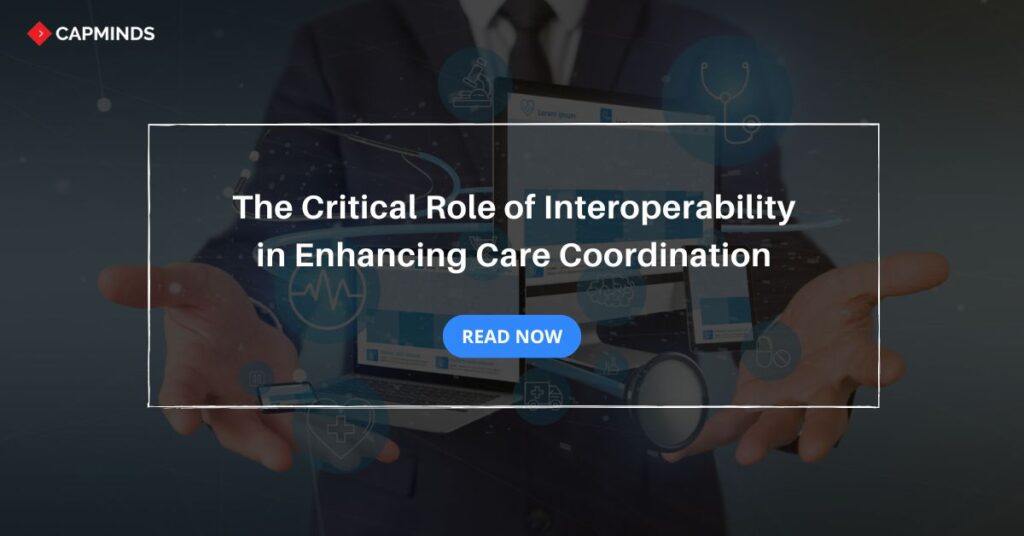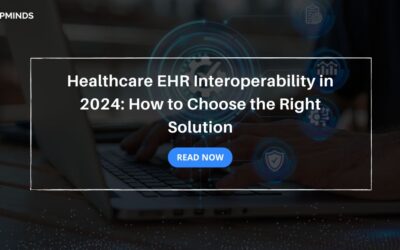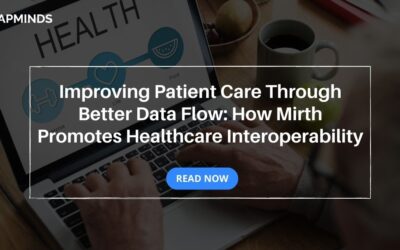The Critical Role of Interoperability in Enhancing Care Coordination
Interoperability in healthcare is the foundation of effective care coordination, allowing for easy data exchange among providers, specialists, and patients. As healthcare systems become more complex, maintaining smooth flows of patient information is critical to improving outcomes and lowering costs.
This blog discusses the importance of interoperability in bridging gaps, overcoming hurdles, and using technologies such as HIE, APIs, and FHIR to improve communication, expedite workflows, and provide patients with improved access to their health data.
What is Interoperability in Healthcare?
Health Interoperability enables an easy way for providers to obtain patient data and collaborate with other doctors. As modern technologies improve, health interoperability becomes more vital in ensuring that patients receive the highest quality care.
Health interoperability also helps clinicians share patient data with other providers in a more secure manner. This ensures that the patient’s sensitive information is protected from unauthorized access. Using health interoperability has various advantages:
- Allows healthcare systems to exchange patient information easily.
- Encourages coordinated care among professionals.
- Optimizes resources and reduces administrative costs.
- Encourages the use of modern health technologies.
- Reduces redundant tests, saving time for healthcare practitioners.
Related: Healthcare EHR Interoperability in 2025: How to Choose the Right Solution
Why is Care Coordination Important for Patient Outcomes?
Care coordination between healthcare providers plays a crucial role in patient-centered care. It ensures that all providers who are involved in patient care are aligned and well-informed about the patient. Without this effective care coordination,
- Patients receive inconsistent treatment because of the lack of communication between providers.
- Important medical information may be unavailable during emergencies or follow-ups.
- Poor coordination can result in delays, incorrect diagnoses, and even medical blunders.
Interoperability swiftly enhances care coordination by offering a single communication route between healthcare systems.
Key Interoperability Technologies
1. Health Information Exchange
Health information exchange platform allows healthcare providers to connect to share the real-time data sharing between systems. It helps with:
- Centralize patient information for a seamless transition between providers.
- Minimize data silos and ensure timely access to medical histories, test results, and treatment plans.
- Improve decision-making for better patient outcomes.
2. Application Programming Interfaces
API ties together disparate systems to allow information sharing in a more organized way to allow secure data exchange that doesn’t rely on static, document-based exchange.
For instance, software features an automatic or near-automatic connection to another system. This connection is likely to occur through an API.
- An API likely uses different languages, so one system can’t fully ingest and then use information from another system.
- Using open API providers can interact with each other and can effectively access particular clinical data at the point of care.
Also, patients can collect, analyze, and access healthcare information and make updates. While developing APIs, many challenges might occur. Here are some of the challenges in API Development:
- API becomes more inefficient until they are not allowed to merge with newer technologies.
- As for medical information protection, there are additional standards, with API the data sharing and privacy issues often go hand in hand.
- There are some standards applicable to healthcare APIs. Compliance with them may be costly as well.
3. Fast Healthcare Interoperability Resources
HL7 produced the Fast Health Interoperable Resource standard, which intends to facilitate the exchange of health data. The major goal of this standard is to ensure that healthcare providers may share patient demographics, prescriptions, allergies, test findings, radiography, and other safety information.
FHIR is based on modern web standards such as RESTful APIs, JSON, and XML. It provides a versatile framework for managing various types of healthcare data. Here are some essential components of the FHIR healthcare standards:
- Interoperability of healthcare data
- Uses RESTful APIs for HIE
- Supports XML and JSON formats
- The resource-based health model
- The components are modular and configurable
- Widely embraced globally
- Enables secure data sharing
FHIR serves as a great platform that has enabled easy access to medical data and seamless communication between various stakeholders including physicians, developers, payers, and patients, which has improved care coordination.
Related: The Complete Guide to FHIR Integration for Healthcare Data and ROI
Challenges in Achieving Interoperability
1. System Compatibility and Data Security
- Each healthcare system often uses different formats which makes the integration process difficult.
- Protecting sensitive patient data during exchanges is critical.
- Given strict regulatory requirements like HIPAA.
2. Adoption Costs and Workflow Changes
- Implementing interoperability solutions involves high costs for new infrastructure and staff training.
- Transitioning to interoperable systems may disrupt existing workflows.
- So, it requires careful and in-depth planning.
3. Privacy Concerns and Compliance Requirements
- Privacy concerns around patient data sharing often slow down the adoption of interoperability technologies.
- Ensuring compliance with healthcare data standards like HL7 and GDPR is resource-intensive.
Benefits of Interoperability for Care Coordination
- Improved Patient Care Through Real-Time Data Access: Physicians gain timely access to complete patient medical histories. This enables us to make accurate diagnosis decisions and provide better treatment.
- Better Communication Between Primary Care Providers and Specialists: Interoperability solutions can help healthcare providers collaborate more effectively. This will reduce the communication gap between providers and enhance better-coordinated care.
- Reduced Duplication of Tests and Procedures: Interoperability minimizes repeated diagnostic tests and imaging procedures by ensuring all providers have access to previous results.
- Empowering Patients with Data Access and Manage their Health Information: Patients can view and share their health information across providers. This encourages patients to be actively involved in their care plans.
- Minimizing Paperwork and Repetitive Documentation for Providers: Interoperability reduces administrative tasks and automates the documentation process allowing providers to focus more on patient care.
Health Interoperability Solution from CapMinds
If you’re seeking the optimal solution for Interoperability & EHR to facilitate the secure exchange of healthcare information and data, look no further.
CapMinds has a team of experts in Interoperability who specialize in linking any health system using world-class protocols such as HL7, FHIR, SMART, RIS, PACS, Lab, eRx, Payor, Payment, and more.
Healthcare organizations and clinicians can reach new heights by automating their processes with our cutting-edge, intelligent, and innovative digital health technologies. This assures 100% improved documentation and advanced health interoperability.
Reach out to CapMinds for enhanced security and protection in your interoperability and data exchange.




